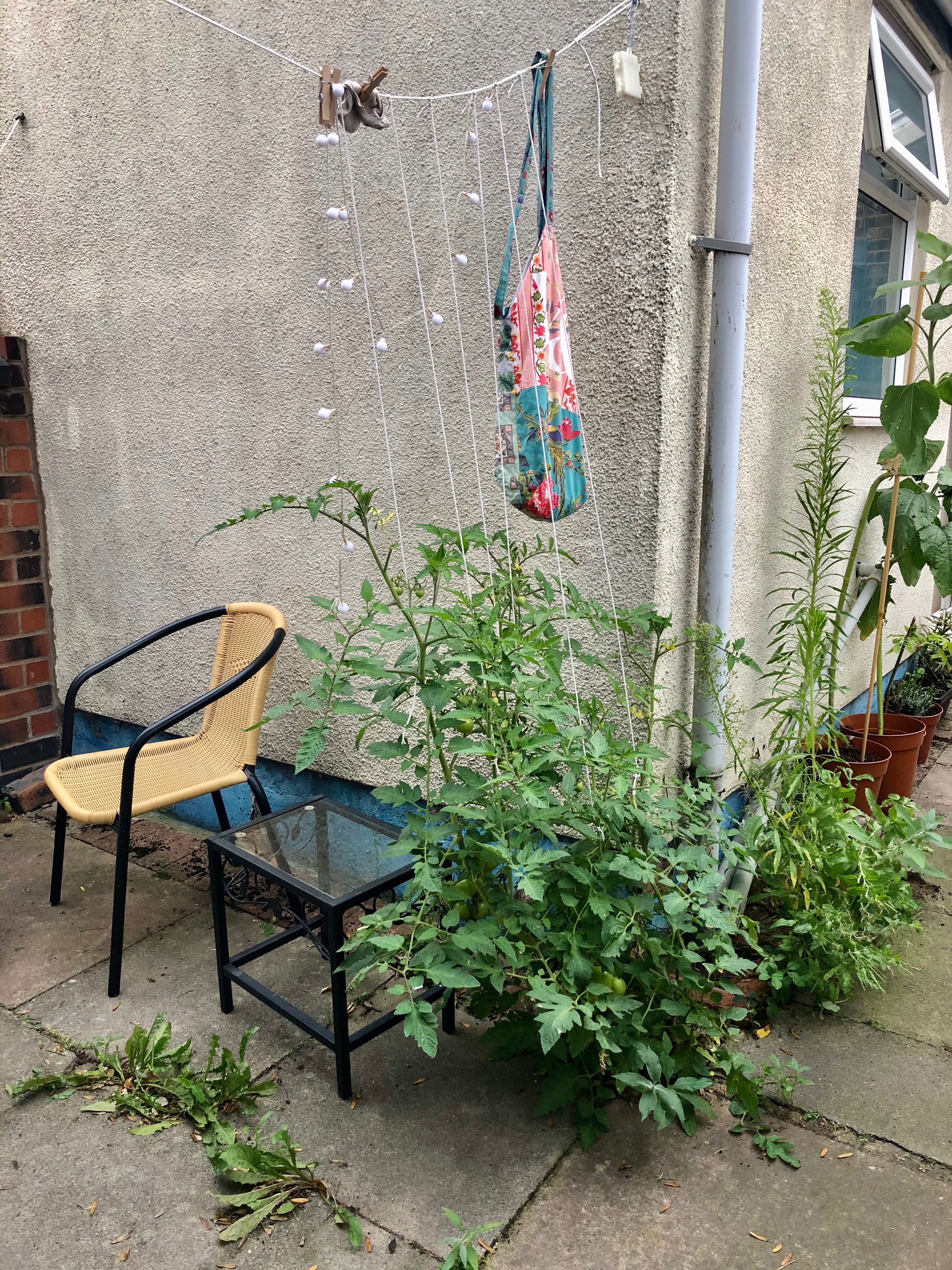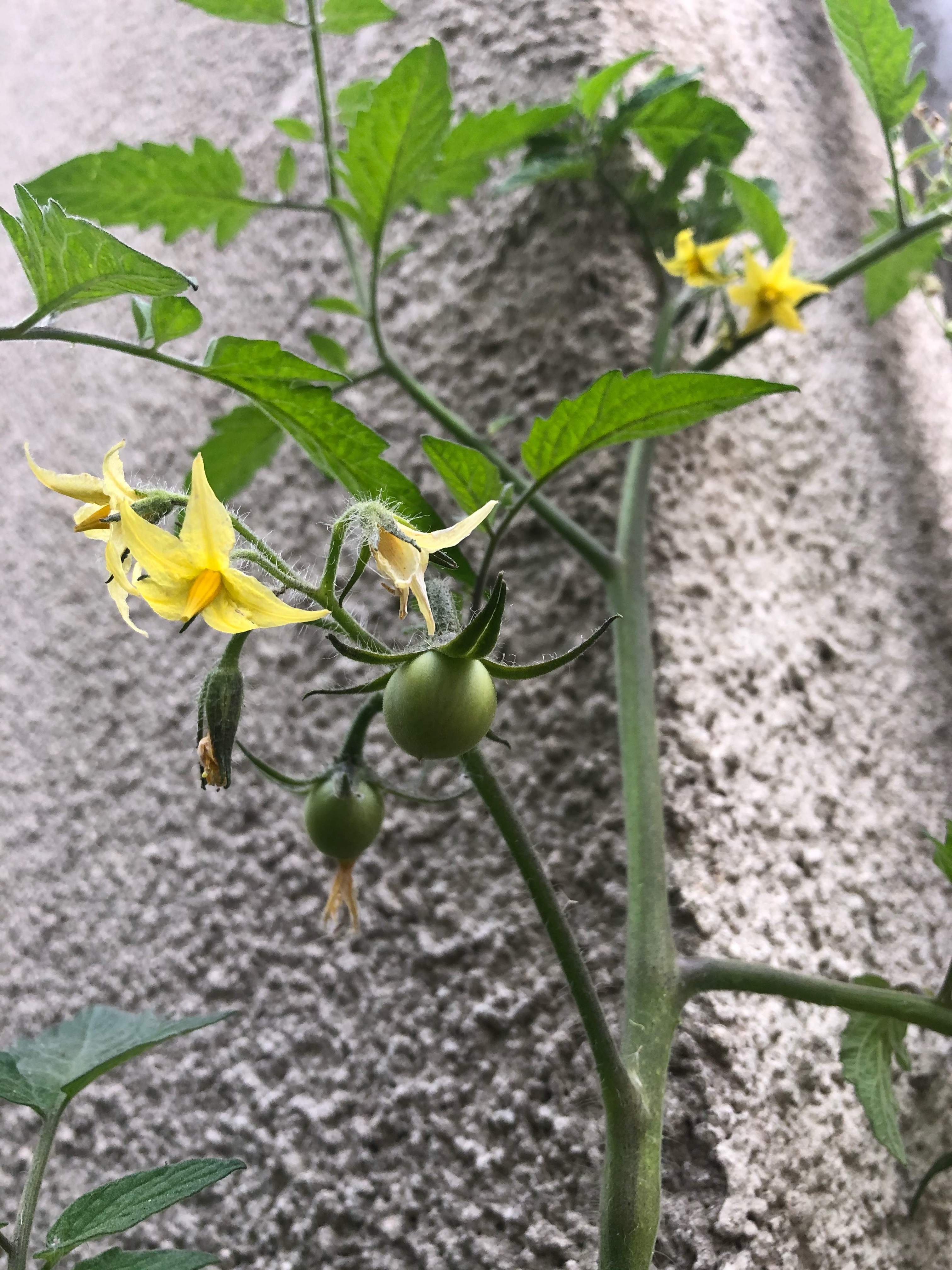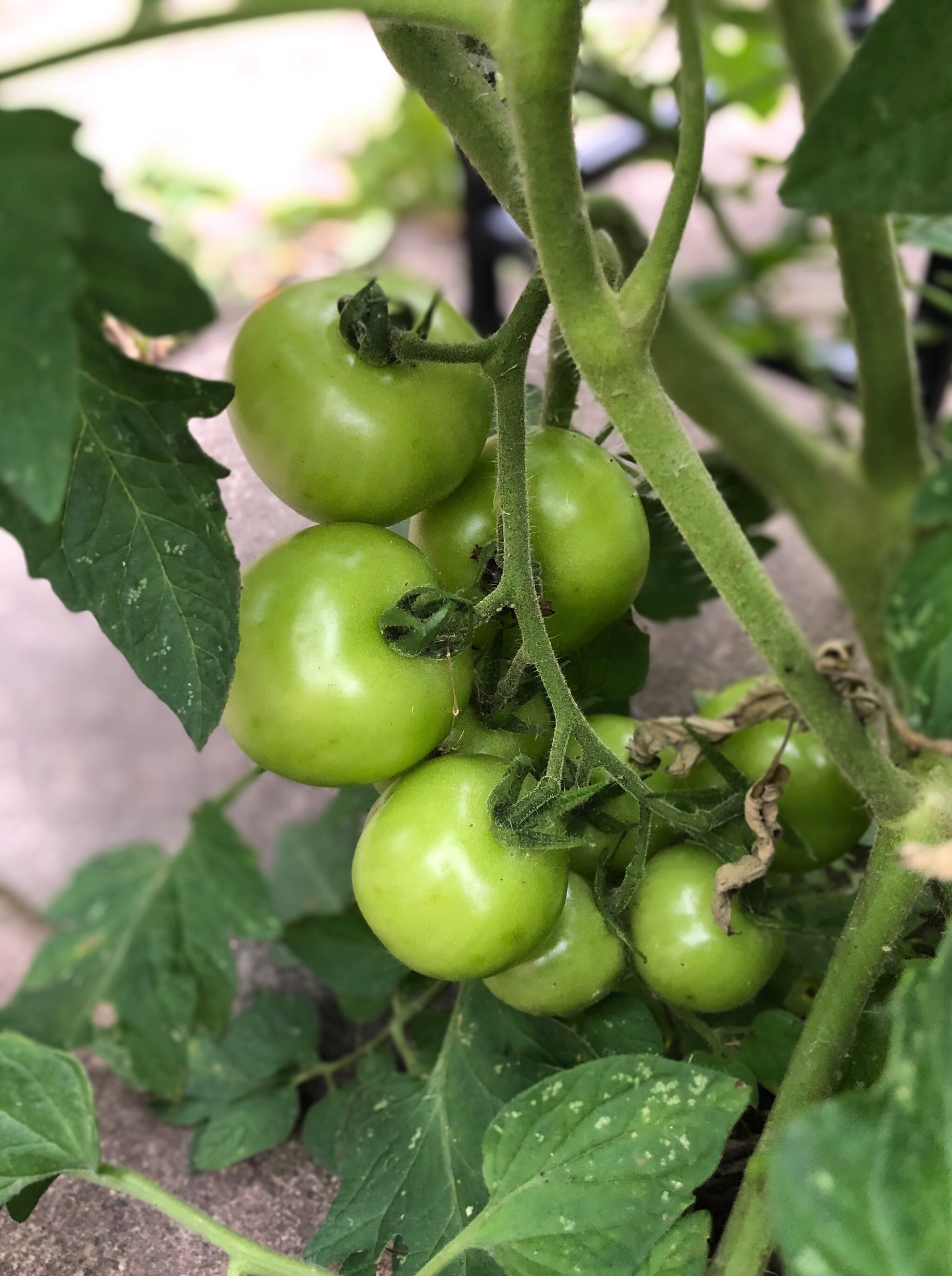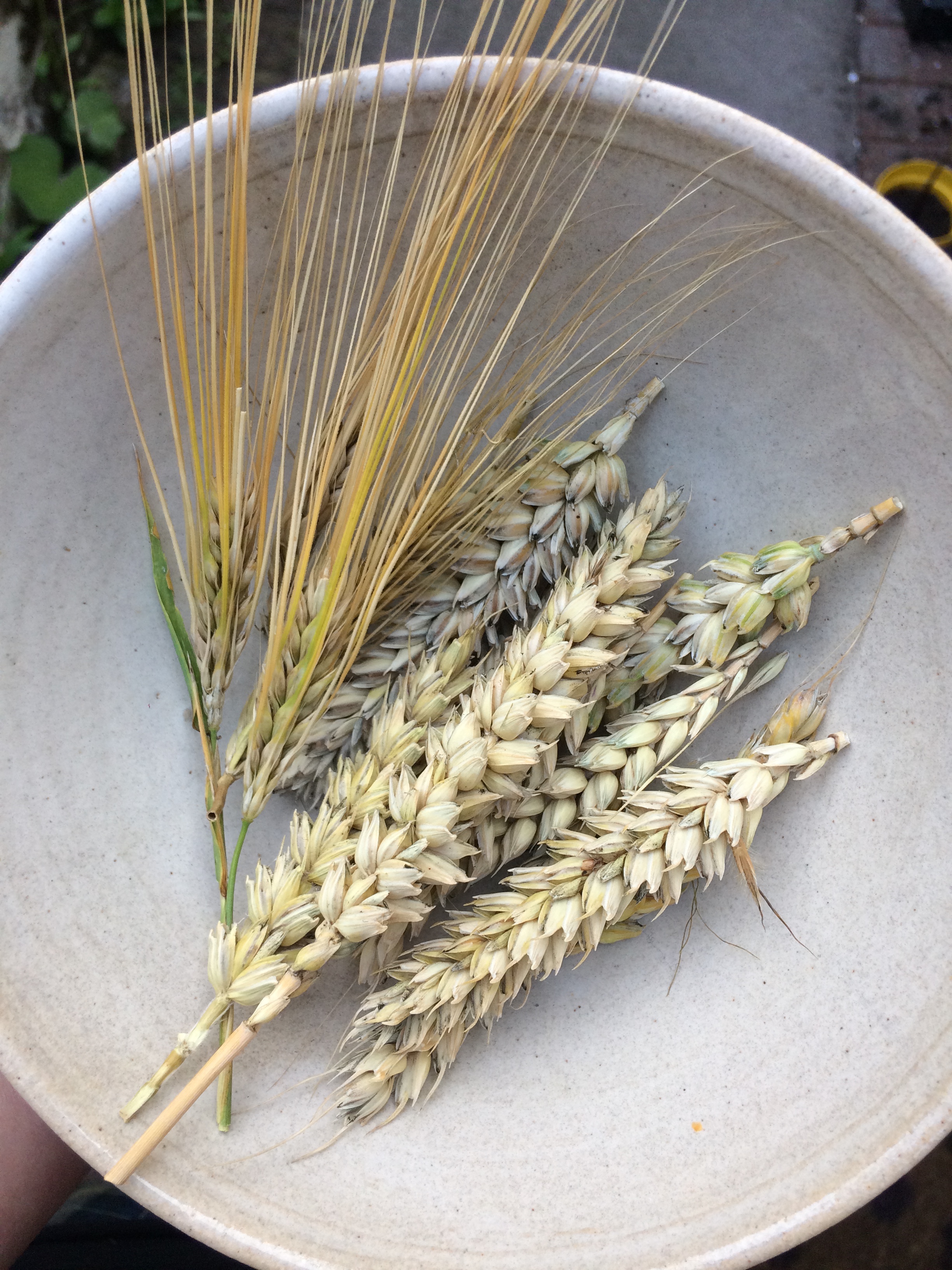COLLECTING / EATING / COOKING / PRESERVING / SHARING EDIBLES IN THE CITY

POLISH SALTWATER PICKLES WITH WILD FENNEL
1 litre mason jar
half a litre of water
1 heaping tablespoon of salt
6-8 pickling cucumbers or 1,5 large cucumber, julienned into wide strips
4 garlic cloves
a handful of wild fennel, preferably including flowers and stems
a large chunk of horseradish root (optional)
2 cherry leaves (optional)
jar | wash the jar with soapy water and rise well. heat up the oven to 100oC, place the jar in a tray and sterilise for 10 minutes. if the jar has a rubber seal, boil it in water for a few minutes.
pickles | arrange the cucumbers tightly in a jar, fill the spaces in between with garlic, fennel, horseradish and leaves. boil the water with salt and immediately pour into the jar. the contents must be entirely submerged in liquid. seal immediately.
WILD FENNEL & GOAT'S CHEESE PASTA
serves 2
1 stalk of wild fennel with leaves
2 vines of cherry tomatoes
1 bulb of garlic
150g of brined tulum cheese (but any fresh goat's cheese will do)
1/2 bag of spaghetti or other pasta
butter
olive oil
oven | heat up the oven to 220oC. separate the stalk of the fennel from the leaves and place the latter aside. chop the stalk, half the vine tomatoes and place them in a roasting tray with a bit of salt and pepper. coat in olive oil and place in the oven. place a whole bulb of garlic alongside the roasting tray. roast till the tomatoes just start to char.
hob | boil water in a pot and cook the pasta al dente. when the tomatoes and fennel are ready, heat up a thumb-sized piece of butter in a pan and tip the contents of the roasting tray onto the pan – the tomatoes should create a beautiful sauce when they hit the hot pan. mix the pasta in with the sauce, crumble the goat's cheese over and add chopped fennel leaves. take the garlic out of the oven and scoop the roasted cloves out – add to the pasta either whole or mashed with a fork. dress with olive oil and season with salt & pepper.
1 litre mason jar
half a litre of water
1 heaping tablespoon of salt
6-8 pickling cucumbers or 1,5 large cucumber, julienned into wide strips
4 garlic cloves
a handful of wild fennel, preferably including flowers and stems
a large chunk of horseradish root (optional)
2 cherry leaves (optional)
jar | wash the jar with soapy water and rise well. heat up the oven to 100oC, place the jar in a tray and sterilise for 10 minutes. if the jar has a rubber seal, boil it in water for a few minutes.
pickles | arrange the cucumbers tightly in a jar, fill the spaces in between with garlic, fennel, horseradish and leaves. boil the water with salt and immediately pour into the jar. the contents must be entirely submerged in liquid. seal immediately.
WILD FENNEL & GOAT'S CHEESE PASTA
serves 2
1 stalk of wild fennel with leaves
2 vines of cherry tomatoes
1 bulb of garlic
150g of brined tulum cheese (but any fresh goat's cheese will do)
1/2 bag of spaghetti or other pasta
butter
olive oil
oven | heat up the oven to 220oC. separate the stalk of the fennel from the leaves and place the latter aside. chop the stalk, half the vine tomatoes and place them in a roasting tray with a bit of salt and pepper. coat in olive oil and place in the oven. place a whole bulb of garlic alongside the roasting tray. roast till the tomatoes just start to char.
hob | boil water in a pot and cook the pasta al dente. when the tomatoes and fennel are ready, heat up a thumb-sized piece of butter in a pan and tip the contents of the roasting tray onto the pan – the tomatoes should create a beautiful sauce when they hit the hot pan. mix the pasta in with the sauce, crumble the goat's cheese over and add chopped fennel leaves. take the garlic out of the oven and scoop the roasted cloves out – add to the pasta either whole or mashed with a fork. dress with olive oil and season with salt & pepper.




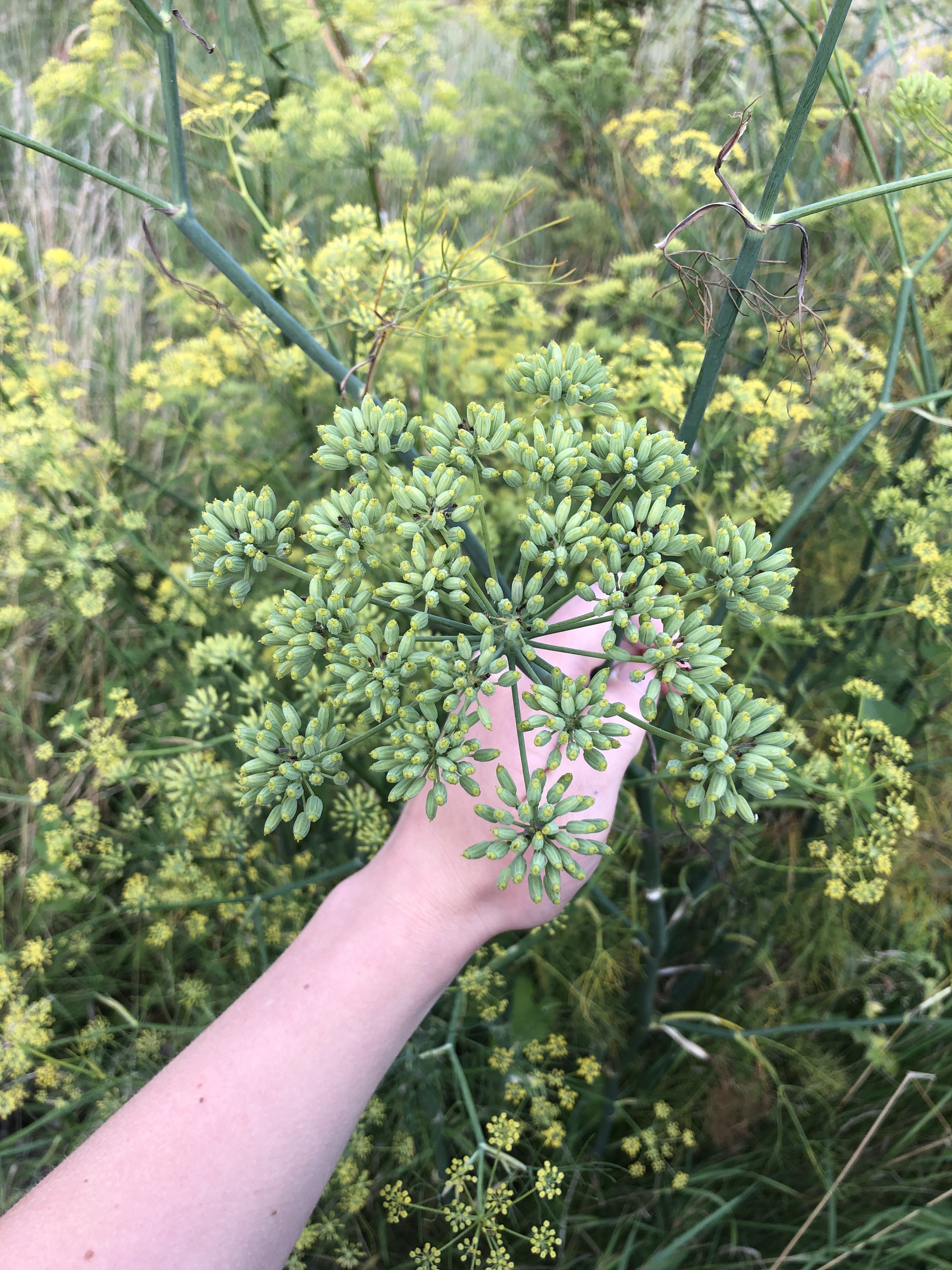
Fennel
leaves:
May – August
flowers:
July – September
seeds:
August – October
site:
Pyenest Street
WILD GARLIC PESTO
1 large bunch of wild garlic, washed
1 large bunch of basil/parsley/coriander
60 g of pine nuts, toasted
60g of Parmesan
150ml of olive oil
the texture of this pesto depends on the method you choose. blending the ingredients results in a smoother, quite a creamy pesto, excellent as a sauce. doing it by hand in a pestle and mortar, although more time and energy consuming is rewarding though – combined slowly, the ingredients blend just enough for the flavours to unite but also to preserve the texture of individual ingredients.
pestle & mortar | start by finely chopping the herbs, garlic and pine nuts together. add them to the mortar with grated Parmesan and olive oil and slowly grind to a desired consistency.
blender | blend all the ingredients safe the olive oil in a blender. add the oil and blend just to combine.
1 large bunch of wild garlic, washed
1 large bunch of basil/parsley/coriander
60 g of pine nuts, toasted
60g of Parmesan
150ml of olive oil
the texture of this pesto depends on the method you choose. blending the ingredients results in a smoother, quite a creamy pesto, excellent as a sauce. doing it by hand in a pestle and mortar, although more time and energy consuming is rewarding though – combined slowly, the ingredients blend just enough for the flavours to unite but also to preserve the texture of individual ingredients.
pestle & mortar | start by finely chopping the herbs, garlic and pine nuts together. add them to the mortar with grated Parmesan and olive oil and slowly grind to a desired consistency.
blender | blend all the ingredients safe the olive oil in a blender. add the oil and blend just to combine.

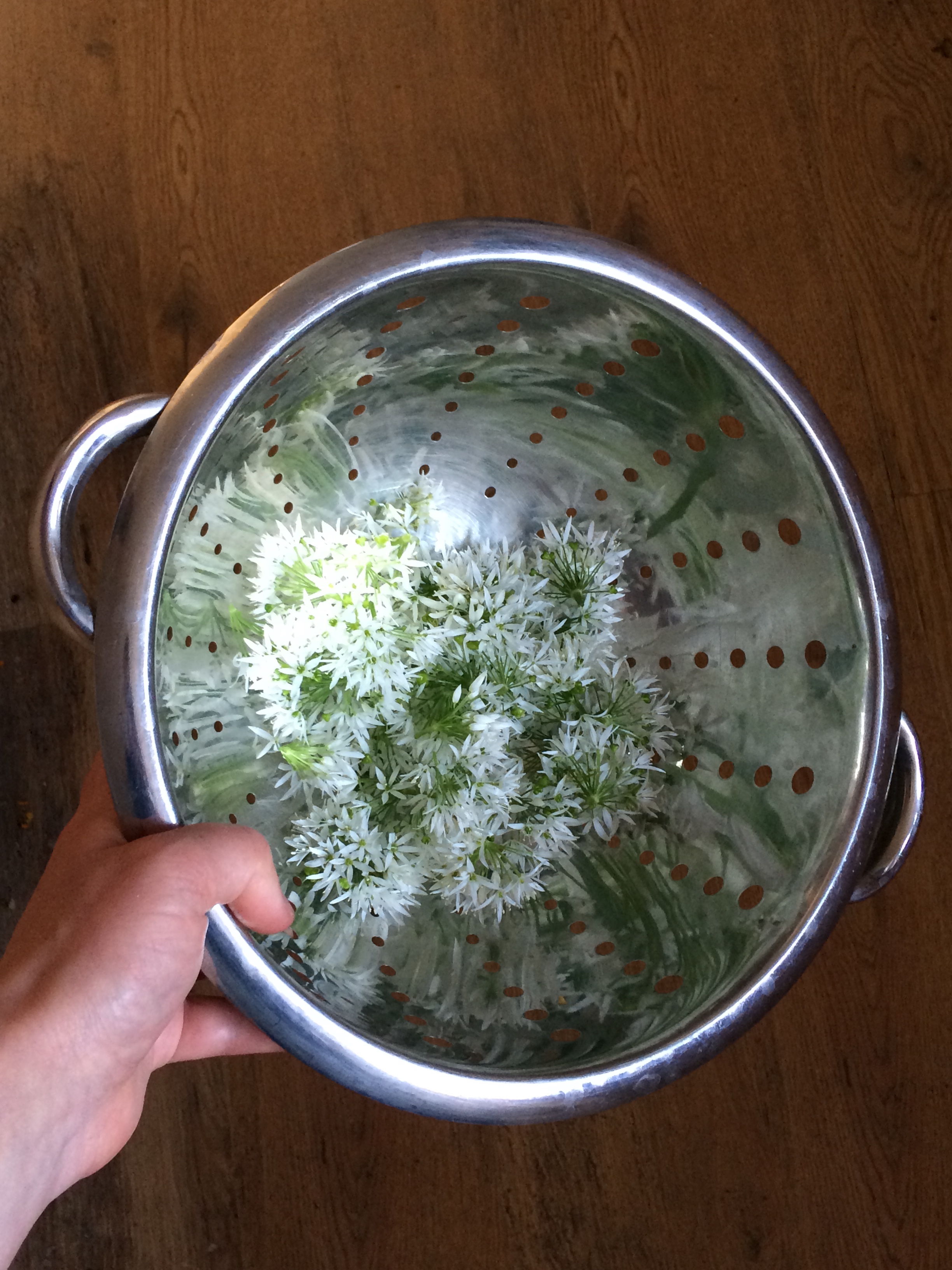

Wild garlic
leaves & flowers:
mid-April – May
site:
Hanley Park, Trent & Mersey Canal
PICKLED ASH KEYS
2 cups of ash keys without stalks
1 tsp ground cloves
1 tsp ground cinnamon
4 bay leaves
8 peppercorns
1 tsp allspice
1/2 tsp ground ginger
1 tsp salt
3 tbsp brown sugar
2 cups cider vinegar
pickling juice | mix the vinegar, spices, salt and sugar in a heatproof bowl. fill a pot with hot water and place the bowl on top and bring the mixture inside to a boil – this will take some time. boil the mixture for 5 minutes, then take off the heat and allow to cool completely. strain the liquid through a fine sieve or muslin cloth.
jar | wash the jar with soapy water and rise well. heat up the oven to 100oC, place the jar in a tray and sterilise for 10 minutes. if the jar has a rubber seal, boil it in water for a few minutes.
ash keys | wash the ash keys, then place them in a pan and cover with cold water. bring to boil and simmer for 5 minutes. strain the water and repeat the process again with fresh water. strain and pat dry with paper towel. place in the jar and cover with pickling liquid
preserving | place the jars in a cool, dark place. let the ash keys mature for 1.5-3 months. serve with cheese or with salads and pastas instead of capers.
2 cups of ash keys without stalks
1 tsp ground cloves
1 tsp ground cinnamon
4 bay leaves
8 peppercorns
1 tsp allspice
1/2 tsp ground ginger
1 tsp salt
3 tbsp brown sugar
2 cups cider vinegar
pickling juice | mix the vinegar, spices, salt and sugar in a heatproof bowl. fill a pot with hot water and place the bowl on top and bring the mixture inside to a boil – this will take some time. boil the mixture for 5 minutes, then take off the heat and allow to cool completely. strain the liquid through a fine sieve or muslin cloth.
jar | wash the jar with soapy water and rise well. heat up the oven to 100oC, place the jar in a tray and sterilise for 10 minutes. if the jar has a rubber seal, boil it in water for a few minutes.
ash keys | wash the ash keys, then place them in a pan and cover with cold water. bring to boil and simmer for 5 minutes. strain the water and repeat the process again with fresh water. strain and pat dry with paper towel. place in the jar and cover with pickling liquid
preserving | place the jars in a cool, dark place. let the ash keys mature for 1.5-3 months. serve with cheese or with salads and pastas instead of capers.
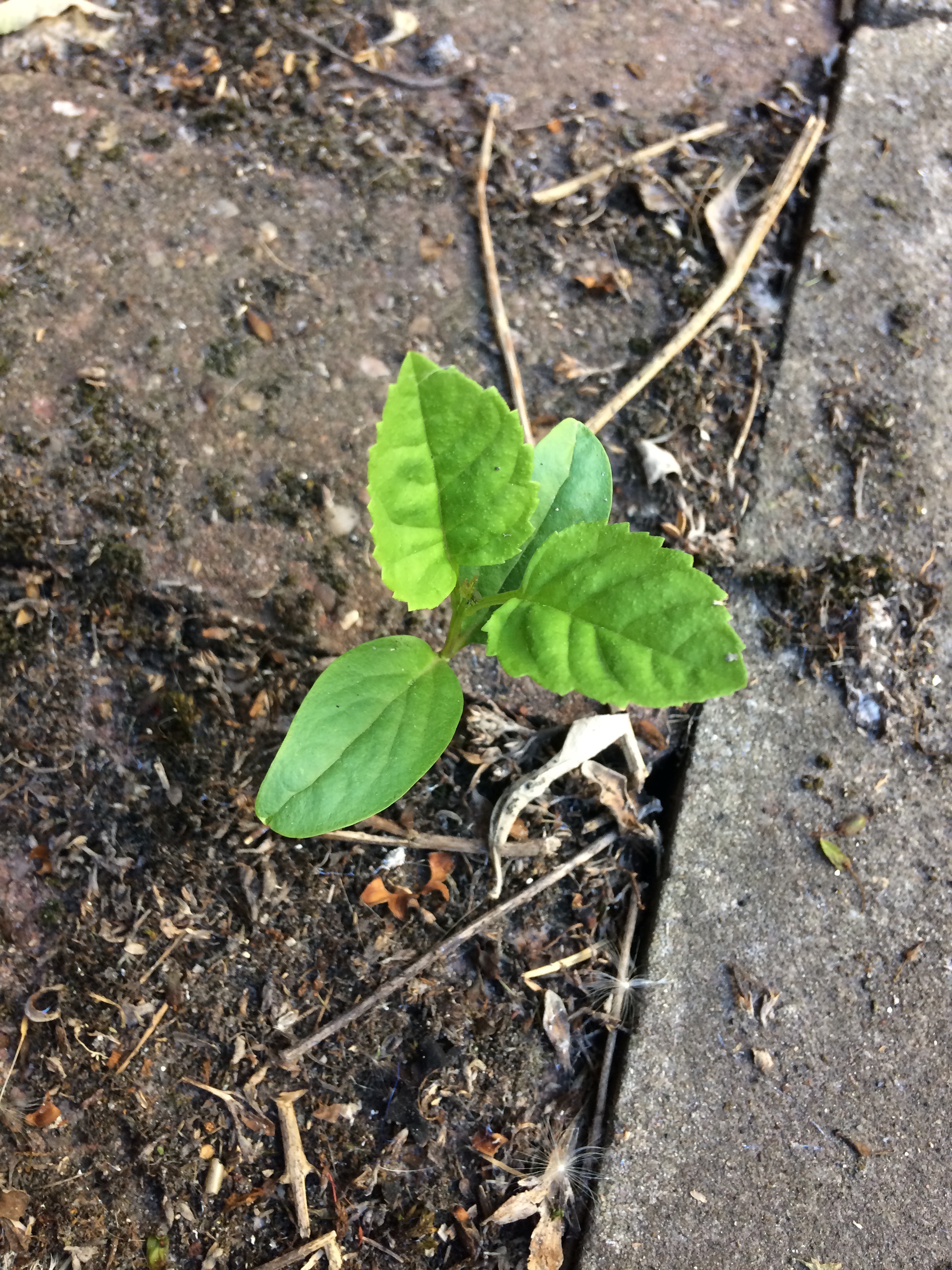
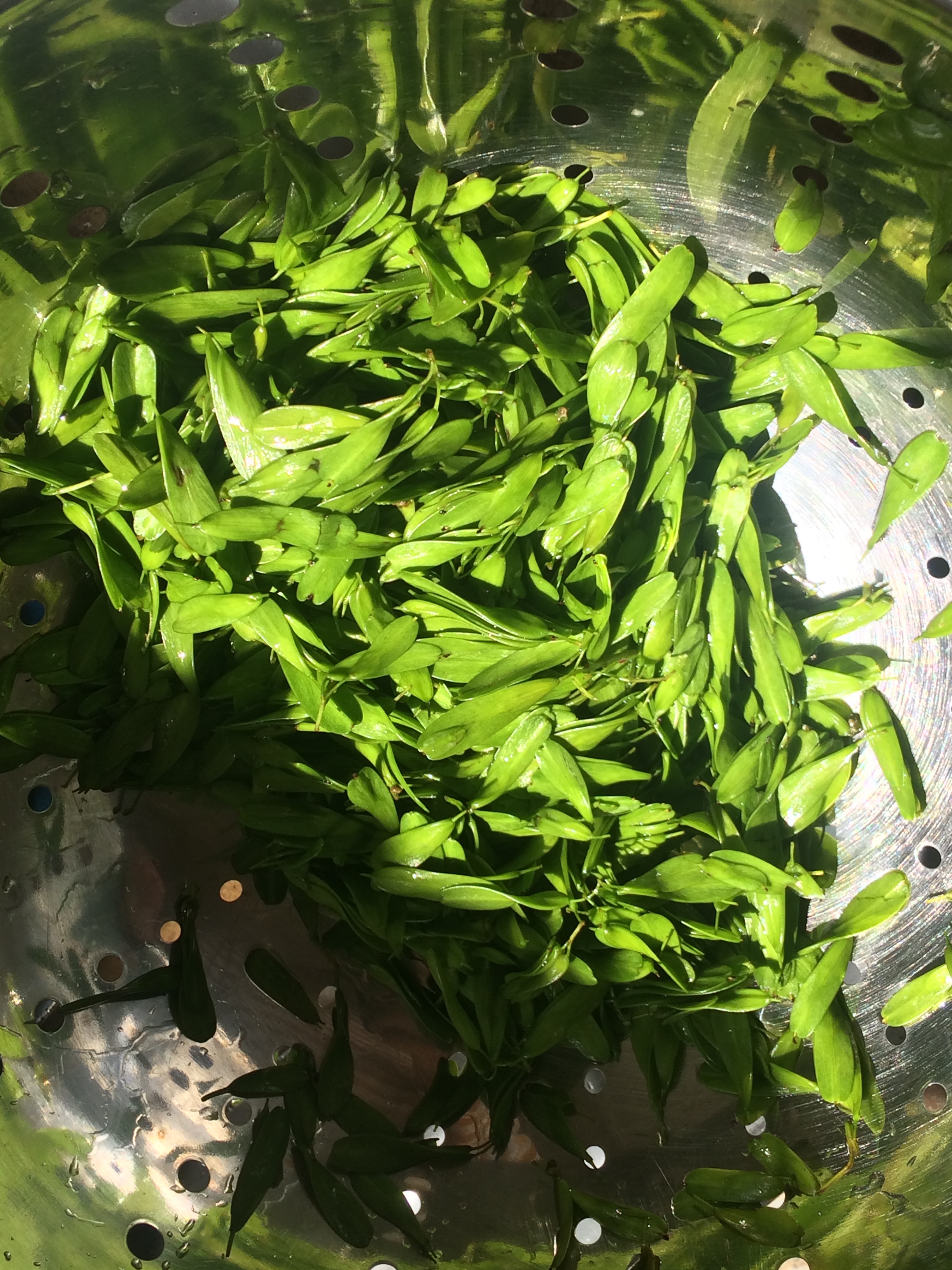

Ash
keys:
May – early June
site:
Harcourt Street
ELDERFLOWER CORDIAL (WITH OR WITHOUT WILD ROSES)
makes 800ml
12 large elderflower heads
3 medium lemons
325g caster sugar
500ml water
(1 wild rose)
day 1 | gently wash the elderflower heads to get rid of any bugs. shave the skin off the lemons (and pick the rose petals). boil the water, combine the skin and flowers and pour the hot water over. infuse for 36 hours in room temperature.
day 2 | strain the infusion into a saucepan, squeezing the flowers well to achieve maximum flavour. discard the flowers. add the sugar and lemon juice and cook together until the sugar's dissolved and the liquid is starting to simmer – about 4 minutes. pour into a sterilised bottle and keep in the fridge.
ELDERBERRY SYRUP
3½ cups water
1 1/3 cups fresh elderberry
1 cup good quality honey
16 ounce bottle
syrup | pour the water into a medium saucepan and add the elderberries. bring to a boil and then cover and reduce to a simmer for about 45 minutes to 1 hour until the liquid has reduced by almost half. remove from heat and let cool until it is cool enough to be handled. mash the berries carefully using a spoon or other flat utensil. pour through a strainer into a glass jar or bowl. discard the elderberries and let the liquid cool to lukewarm. when it is no longer hot, add the honey and stir well. when the honey is well mixed into the elderberry mixture, pour the syrup into a 16 ounce glass bottle of some kind. store in the fridge.
makes 800ml
12 large elderflower heads
3 medium lemons
325g caster sugar
500ml water
(1 wild rose)
day 1 | gently wash the elderflower heads to get rid of any bugs. shave the skin off the lemons (and pick the rose petals). boil the water, combine the skin and flowers and pour the hot water over. infuse for 36 hours in room temperature.
day 2 | strain the infusion into a saucepan, squeezing the flowers well to achieve maximum flavour. discard the flowers. add the sugar and lemon juice and cook together until the sugar's dissolved and the liquid is starting to simmer – about 4 minutes. pour into a sterilised bottle and keep in the fridge.
ELDERBERRY SYRUP
3½ cups water
1 1/3 cups fresh elderberry
1 cup good quality honey
16 ounce bottle
syrup | pour the water into a medium saucepan and add the elderberries. bring to a boil and then cover and reduce to a simmer for about 45 minutes to 1 hour until the liquid has reduced by almost half. remove from heat and let cool until it is cool enough to be handled. mash the berries carefully using a spoon or other flat utensil. pour through a strainer into a glass jar or bowl. discard the elderberries and let the liquid cool to lukewarm. when it is no longer hot, add the honey and stir well. when the honey is well mixed into the elderberry mixture, pour the syrup into a 16 ounce glass bottle of some kind. store in the fridge.
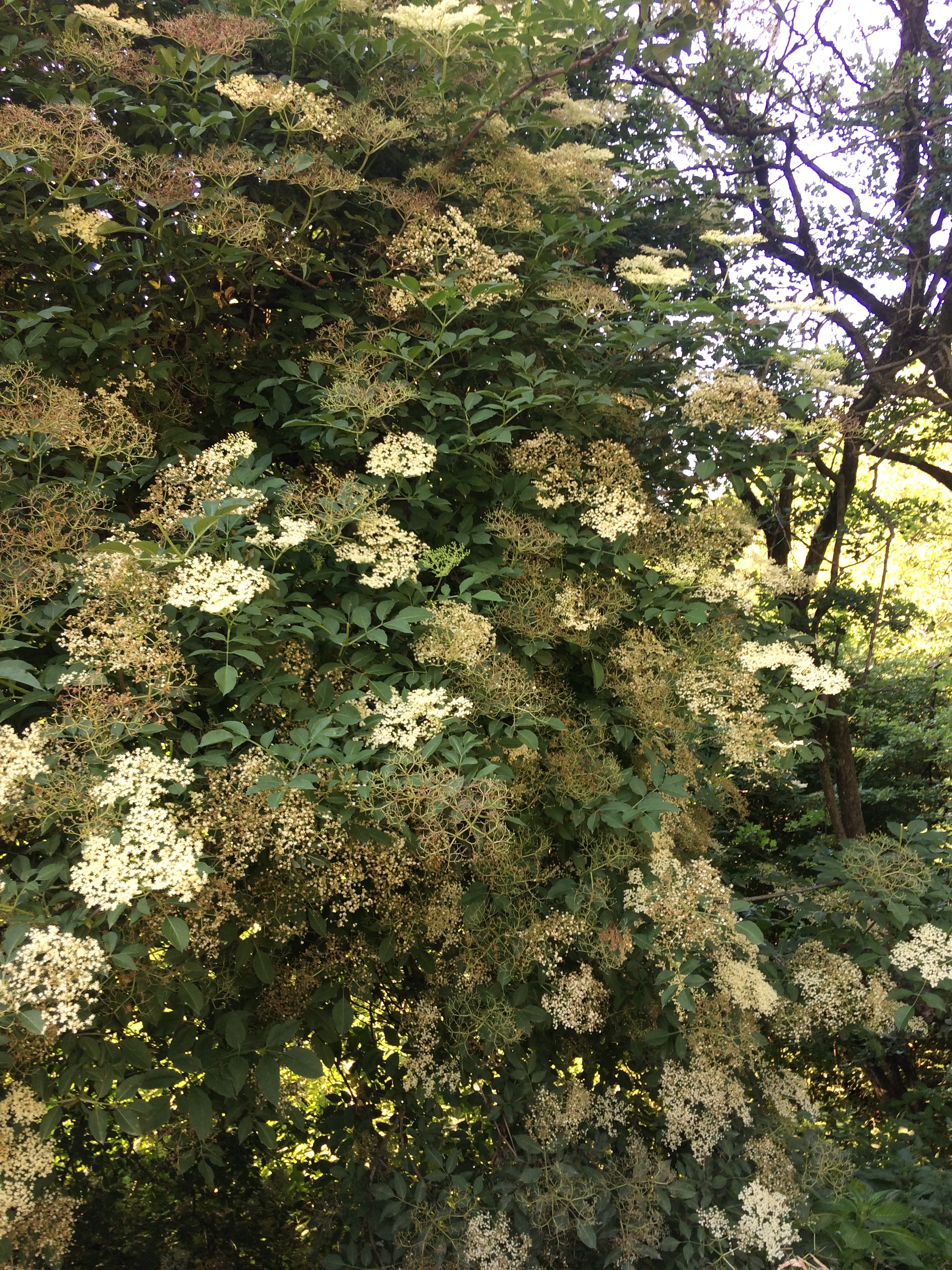

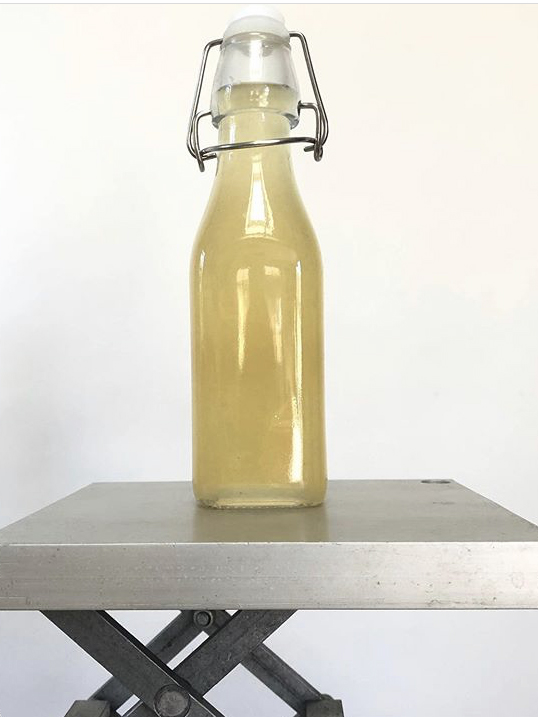
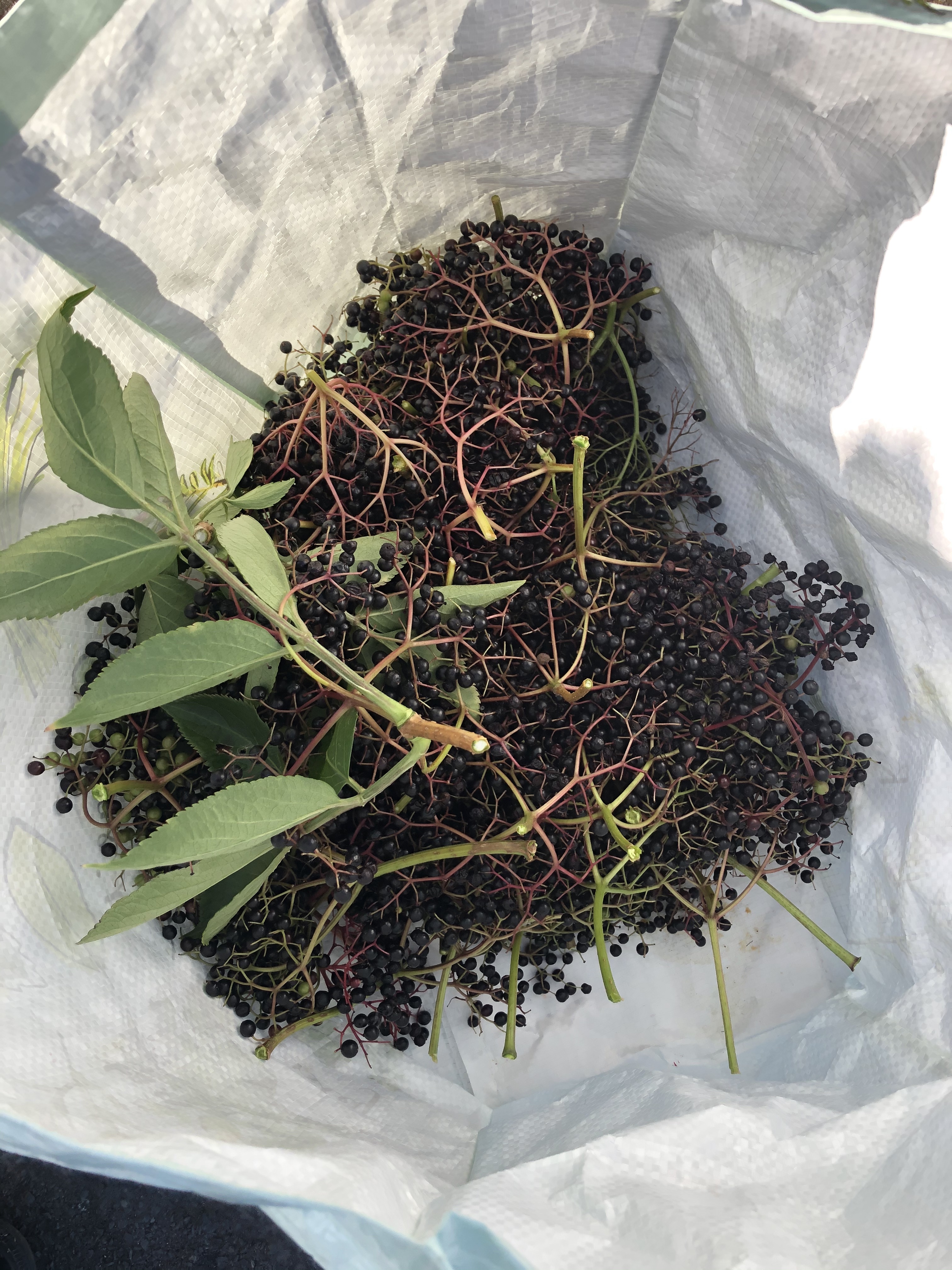

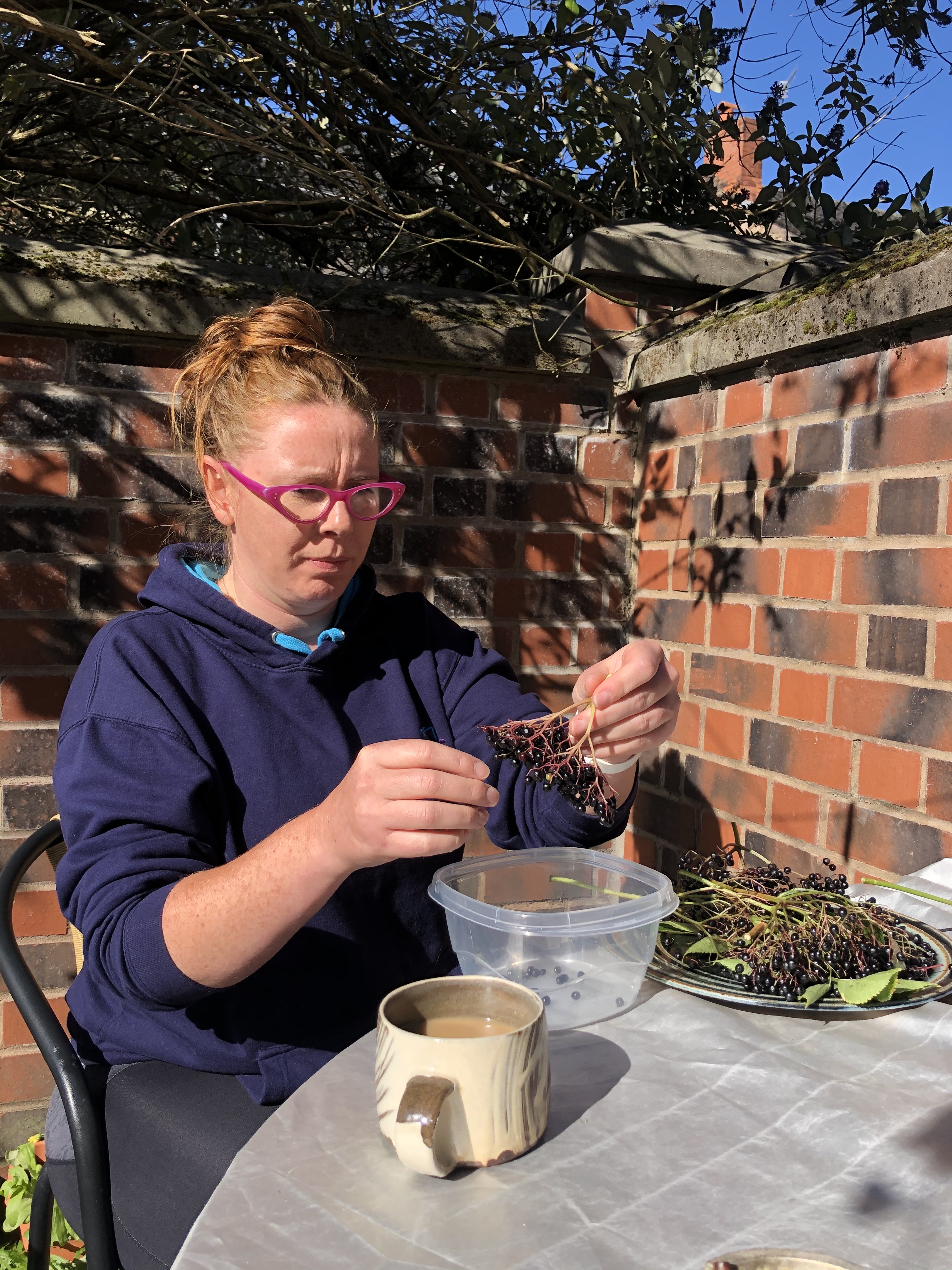
Elder
flowers:
May – mid-June
berries:
August – September
site:
everywhere
BROWNFIELD JAM
100g wild strawberries/raspberries/currants/brambles
140g caster sugar
5ml lemon juice
12.5ml liquid pectin
jars | wash two small jars with soapy water and rise well.
heat up the oven to 100oC, place the jars in a tray and sterilise for 10 minutes.
if the jars have rubber seals, boil them in water for a few minutes.
jam | gently wash the fruit, trying not to break it down. add the fruit, sugar and lemon
juice to a saucepan and let the sugar dissolve over medium heat, stirring occasionally
but being gentle - you want the fruit to keep its shape for as long as possible. when
the sugar’s dissolved, bring the mixture to a rapid boil for no more than 2 minutes
if you want the fruit to keep shape (you can add a small piece of butter if it’s
foaming a lot). take of the heat and mix in the pectin well. transfer to warm jars
and seal immediately.
100g wild strawberries/raspberries/currants/brambles
140g caster sugar
5ml lemon juice
12.5ml liquid pectin
jars | wash two small jars with soapy water and rise well.
heat up the oven to 100oC, place the jars in a tray and sterilise for 10 minutes.
if the jars have rubber seals, boil them in water for a few minutes.
jam | gently wash the fruit, trying not to break it down. add the fruit, sugar and lemon
juice to a saucepan and let the sugar dissolve over medium heat, stirring occasionally
but being gentle - you want the fruit to keep its shape for as long as possible. when
the sugar’s dissolved, bring the mixture to a rapid boil for no more than 2 minutes
if you want the fruit to keep shape (you can add a small piece of butter if it’s
foaming a lot). take of the heat and mix in the pectin well. transfer to warm jars
and seal immediately.

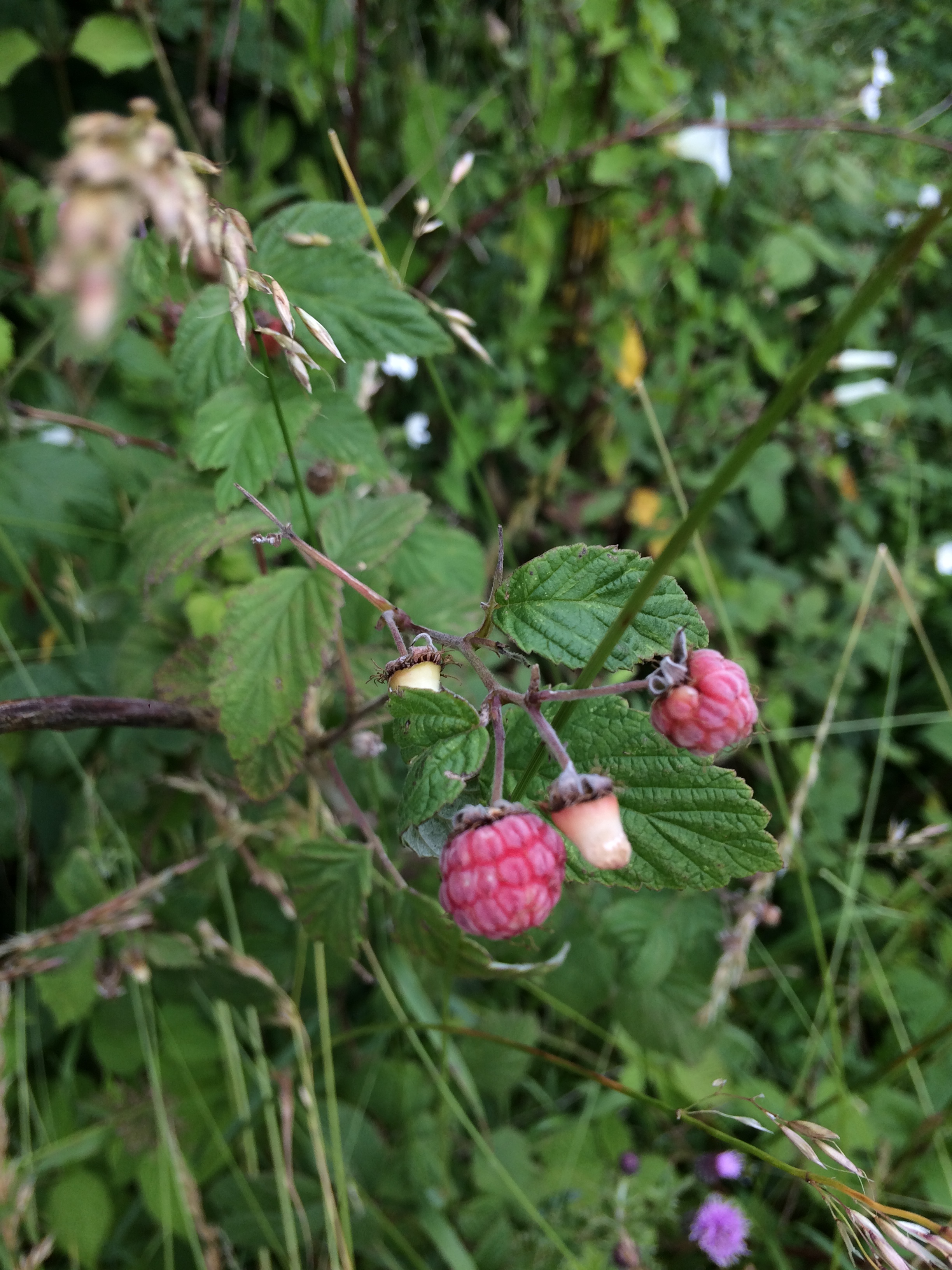
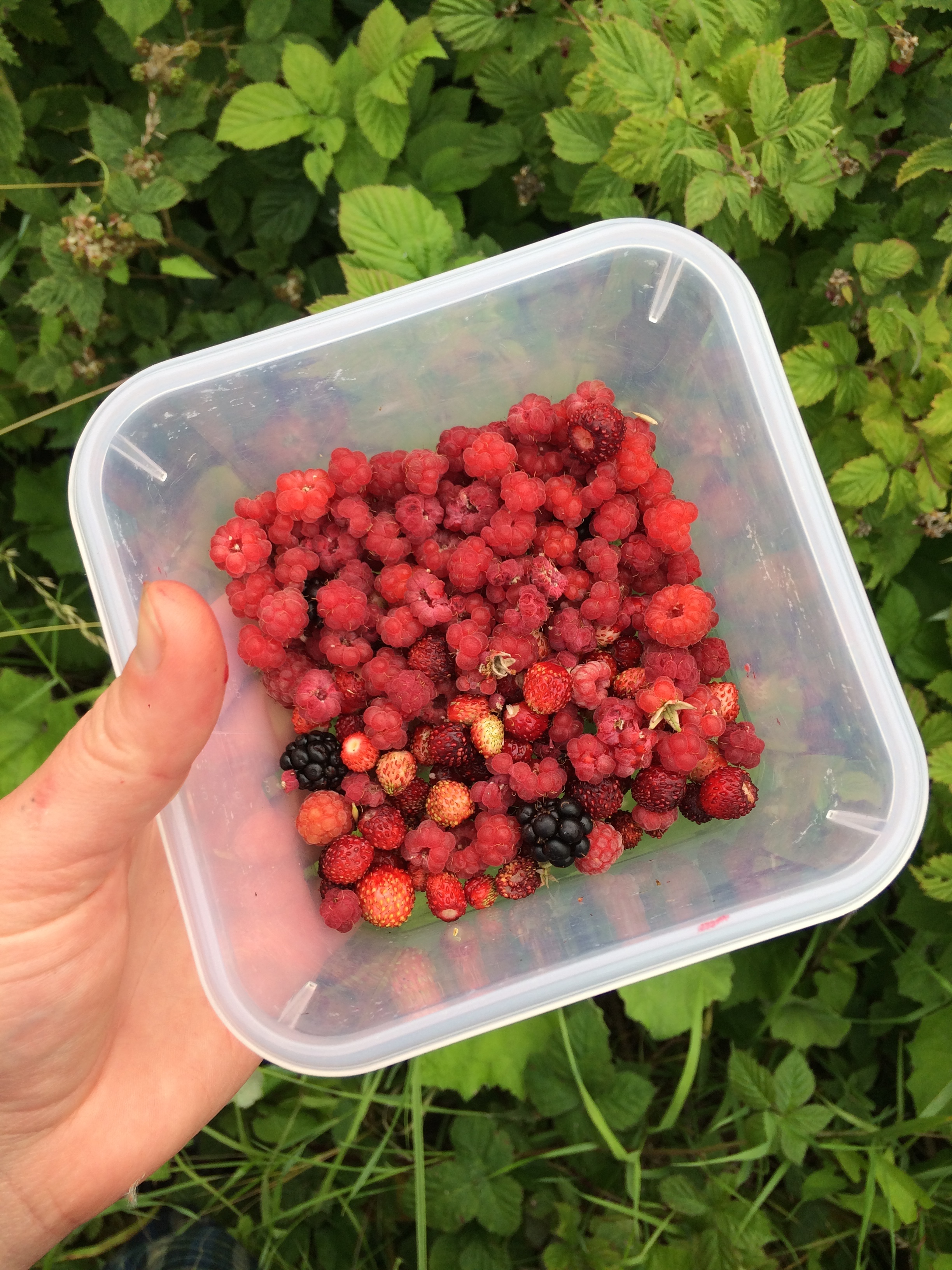
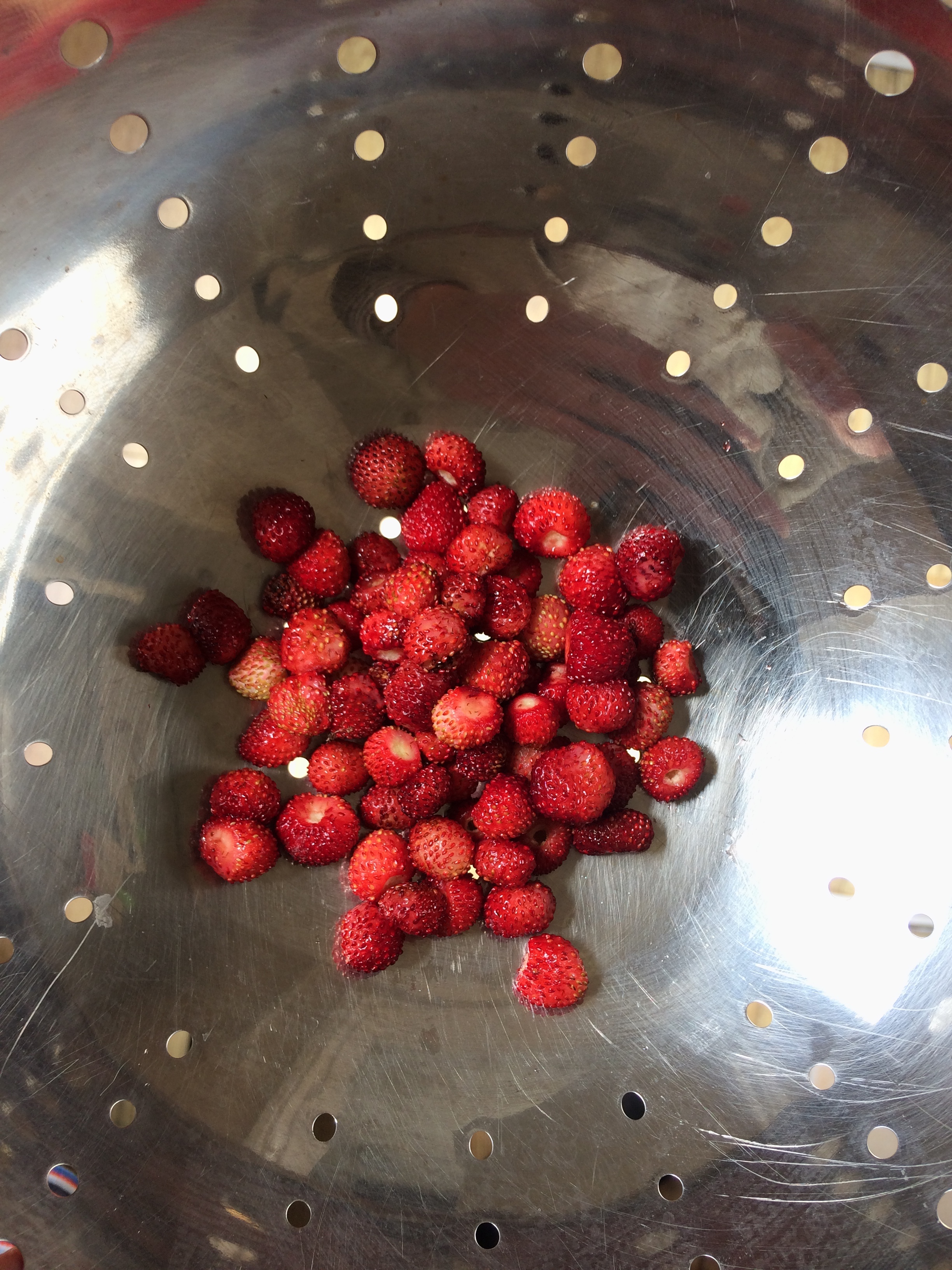
Berries
wild strawberry:
June
raspberry:
July
bramble:
August
site:
Burslem Port, Pyenest Street
GREEN TOMATO PICKLES
375g of green tomatoes
10g of garlic cloves, sliced
30g of caster sugar
250g of white wine vinegar
250ml of water
1 bay leaf
1/2 tsp black peppercorns
1/4 tsp yellow mustard seeds
1/4 tsp coriander seeds
1 pinch of chilli flakes
salt
1 L mason jar
prep | wash the jar with soapy water and rise well. heat up the oven to 100oC, place the jar in a tray and sterilise for 10 minutes. if the jar has a rubber seal, boil it in water for a few minutes. dice the tomatoes into 5cm pieces. weigh the jar, record it, then pack the tomatoes into it.
pickling liquid | place the rest of the ingredients in a large saucepan and boil. allow to cool and pour over the tomatoes. ensure all tomatoes are covered in pickling liquid.
salt | place the full jar on the scales again. subtract the original weight of the jar to find the weight of its contents. calculate 1% of the content and add this amount of salt into the jar. seal the jar and let it pickle for at least a week. once opened, they will keep in the fridge for up to 3 months. serve with cold cuts and cheese, in salads or blitzed into a salsa verde.
375g of green tomatoes
10g of garlic cloves, sliced
30g of caster sugar
250g of white wine vinegar
250ml of water
1 bay leaf
1/2 tsp black peppercorns
1/4 tsp yellow mustard seeds
1/4 tsp coriander seeds
1 pinch of chilli flakes
salt
1 L mason jar
prep | wash the jar with soapy water and rise well. heat up the oven to 100oC, place the jar in a tray and sterilise for 10 minutes. if the jar has a rubber seal, boil it in water for a few minutes. dice the tomatoes into 5cm pieces. weigh the jar, record it, then pack the tomatoes into it.
pickling liquid | place the rest of the ingredients in a large saucepan and boil. allow to cool and pour over the tomatoes. ensure all tomatoes are covered in pickling liquid.
salt | place the full jar on the scales again. subtract the original weight of the jar to find the weight of its contents. calculate 1% of the content and add this amount of salt into the jar. seal the jar and let it pickle for at least a week. once opened, they will keep in the fridge for up to 3 months. serve with cold cuts and cheese, in salads or blitzed into a salsa verde.
